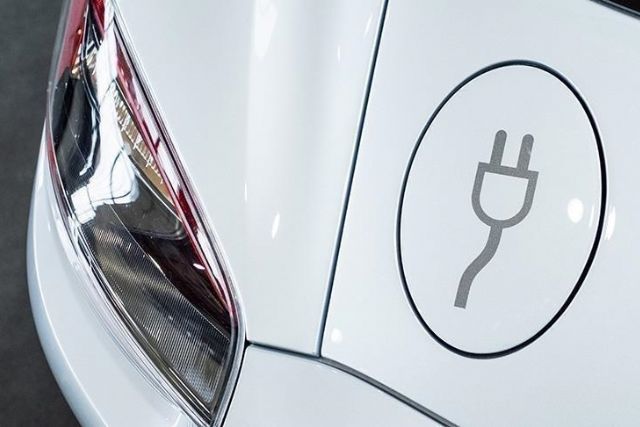Electric vehicles' global market share projected to reach 29% by 2025
COVID-19 relief packages resulted in new policy support for EVs, making them more affordable compared to ICEs, expert says

IZMIR
The global market share of electric vehicles (EVs) is expected to reach as much as 29% by 2025, driven by demand from China and Europe, according to Marius Kluge Foss, senior vice president at Rystad Energy on Thursday.
With fuel supply issues and surging oil and gas prices dominating the news globally, the public interest in electric vehicles has witnessed a massive surge last month, increasing site searches by as much as 1,600% in September.
New models entering the market and decreasing costs have also caused extensive market growth in the past year. According to the International Energy Agency's Global EV Outlook 2021, worldwide 368 electric car models were available in 2020, marking an increase of 328% compared to 2015 when there were only 86.
China has the widest choice as the world's largest EV market. But in 2020, the biggest increase in the number of models was in Europe where it more than doubled, the IEA noted.
These numbers were also reflected in the recent EV uptakes in Europe, where EVs and plug-in hybrid cars outsold diesel in August 2021 for the first time, according to data released by auto industry analyst JATO Dynamics.
Race for battery investments
Over the past year, automakers have become keen to invest heavily in EV battery production to meet the projected demand growth in the coming years.
Japanese automotive giant Toyota announced a $13.5 billion investment in battery development and production across the world by 2030, while US automaker Ford and its South Korean battery partner SK Innovation will invest $11.4 billion to build an electric F-150 assembly plant and three battery plants in the US.
Formed in 2021 as a result of a merger between Italian-American Fiat Chrysler and France's PSA Group, Stellantis also entered the battery race with its South Korean battery maker partner, LG Energy Solution to form a joint venture to produce battery cells and modules for North America as part of a $35.3 billion investment plan by 2025.
With plans of eight global gigafactories, including four in Europe, Mercedes-Benz joined Stellantis and Total in taking 33% shares in Automotive Cells Company, with plans to further expand battery cell production and regional supply chains in Europe.
General Motors recently announced similar investments, including the expenditure of $35 billion through 2025 to bring 30 new EVs to the global market and to build additional assembly capacity for electric models. As part of this investment, the company is preparing to spend $4.6 billion on two battery factories in the US with its partner LG Solutions.
Technology companies enter the scene
Meanwhile, technology firms have also started to enter the race for a share of the EV market, including Apple, Sony, Xiaomi and Foxconn. Xiaomi recently confirmed that it would start mass-producing EVs in the first half of 2024 and invest up to $10 billion in its EV division by the turn of the decade.
Known for building consumer electronics for Apple, Taiwan tech giant Foxconn also exhibited three electric vehicle prototypes on Oct. 18, confirming company plans to invest $35 billion for EVs in the next five years.
While Japanese electronics company Sony introduced its Vision-S electric vehicle last year, it revealed that Sony has no plans to mass-produce EVs. Apple is working on an autonomous EV venture called 'Project Titan' and is expected to introduce its EV in 2024.
"Public perception improving"
Foss told Anadolu Agency in an interview of the many factors playing out in recent EV sector developments that are making EVs a viable alternative to conventional vehicles. "Continued cost decline in lithium-ion batteries over the past decade has made EVs more and more affordable, and certain models are already at cost parity with internal combustion engine (ICE) vehicles," he said.
He noted that the steady increase in available and attractive EV models continues to expand the addressable market for EVs. "At the same time, as new models enter the market, the overall specs of all EV models continue to improve, with increased range and improved charging speed probably being the most important."
These developments improve public perception of EVs in general, as price, range and charging have been the main barriers preventing people from switching to EVs, according to Foss.
"The last 1-2 years have also demonstrated a massive shift in the communication from the legacy auto manufacturers, with all basically trying to outcompete each other with ambitious EV sales targets, and most have also set a target year for when they plan to phase out ICE vehicles completely, ranging from the mid-2020s to mid-2030s. Lastly, COVID-19 relief packages, particularly in Europe, resulted in new policy support for EVs, making them more affordable compared to ICEs," Foss explained.
With the EV market share at 9% globally in the second quarter of 2021, Foss projected that this would surpass 10% in the third quarter of the year, driven largely by Europe and China, while the US still lags.
He said Rystad Energy forecasts that the overall global market share of EVs for 2021 will reach 8% in the base case and 9% in the high case, and these shares are expected to be 23% and 29%, respectively by 2025.
"China and Europe are currently taking the lead on EV sales and are likely to continue to do so, with the US and Japan lagging behind. Japan is still focused on fuel cell electric vehicles [FCEVs] and does not seem to have decided on which technology to pursue. Consumers in the US typically favor large vehicles and they often require longer range than other regions, which results in a somewhat delayed adoption of EVs," he said.
Foss noted that other developed countries, especially in Asia, are also moving to electric, but developing countries are expected to lag behind, in part due to tough competition from very cheap ICE models in these countries that make the added battery cost still too much of a barrier for mass adoption.
Regardless, he said that this would likely change as battery costs continue to decline over the next decade.
Foss noted that from a policy perspective, EVs would need continued support to close the price gap to their ICE peers, with support alleviating over the coming years as the gap diminishes.
"Developed countries, where EVs must compete with cheaper ICE models, will likely need to maintain this support for a longer period. Facilitating investments in charging infrastructure is obviously also important to make the transition to EVs convenient for the population," Foss concluded.





